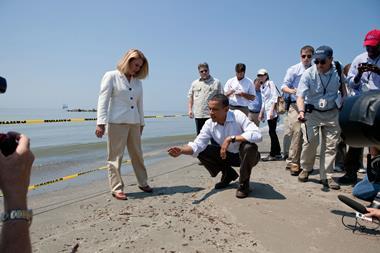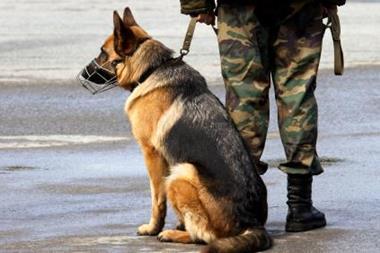With product recalls rising at an alarming rate, it is now critical to take practical crisis management measures to protect the reputation of your organisation and its brands, says Jonathan Hemus
On 19 April, the European Commission released its annual report entitled Keeping European Consumers Safe. The report detailed some alarming statistics: in the previous year there had been over 1,000 notifications of unsafe non-food consumer products. This was more than ever before and a third higher than in 2005. The number of notifications in the UK had doubled from 2005 to 2006, more than the EU average, pointing towards a proportionately bigger problem there than anywhere else in Europe.
These issues are critical to business health for all European corporations. Manage them well and you can protect or even enhance your reputation; manage them badly and they can cause serious damage, directly affecting profits now and in the future. Fortunately there are steps organisations can take now to prepare for the future, which scrutinise risks from the inside out and the outside in.
So why are notifications increasing? Firstly, product safety legislation which came into force in November 2005, compels manufacturers to be responsible for informing the authorities and consumers of any potential risk from their products. Beyond this purely legal obligation there is also a growing desire on the part of organisations to live up to their corporate social responsibility commitments, by being seen to do the right thing.
Recalls are also becoming increasingly international in scope. 48% of European recalls involved products made in China: businesses relying on Chinese manufacturers are particularly vulnerable.
The new media enables news – particularly bad news – to spread extremely quickly without barriers of time or geography. Some new media commentators, bloggers in particular, show little sign of being trained in separating fact from fiction or in perceiving shades of meaning. Thus a vicious circle of rumour can build up from the most innocuous of events.
Clearly there is an increasing need to develop robust crisis management strategies. These strategies should be in place well before there is a hint of a problem, so that when one emerges it can be handled in a professional manner that can even enhance an organisation's reputation.
First, an example of how not to do it. In January 2006 Cadbury's had a leak in one of its waste pipes at its factory at Marlbrook, Herefordshire, UK. However it failed to act until forced to do so by the Health Protection Agency and Food Safety Agency. One million chocolate bars were recalled at a cost of over £30m, but it was too late. Figures from polling company YouGov's Brand Index monitor showed that Cadbury's Brand Index had fallen from 44 to 22, the greatest fall since the index started five years ago.
By contrast, cut-price fashion retailer TK Maxx handled a recent high-profile crisis well. When it emerged that fraudsters had collected the details of over forty million customer credit cards the company launched an immediate and total communication blitz. This included a section on its website dedicated to the crisis, with Q&As, details of customer hotlines and a letter of regret from the CEO. The result was that TK Maxx controlled the message and the damage was minimised.
So what should companies do to prepare for a product liability issue? Here are the practical measures they can take to avoid disaster and even turn a crisis into an opportunity.
• Understand your obligations Crises escalate rapidly and time is always in short supply. As a starting point you must be absolutely clear on what you are legally obliged to do in a product recall, whom you need to notify, and your internal escalation process. Make sure you know this before a crisis happens: you do not want to be downloading and trying to understand documents in the heat of a crisis while the situation careers out of control.
• Form a crisis team This team – typically between six and ten people – is responsible for crisis management, including product recalls. It should include a crisis coordinator who owns the process and makes sure people are trained and that manuals and contact numbers are current. Every team member needs a deputy, and you should identify and train at least three potential spokespeople. Judgements will be made based on the performance of your spokesperson in a crisis, so it is essential to have a strong and broad team on standby.
• Assess risks now. Good planning begins by identifying as many potential threats to your business as possible, including reputational risks. This makes for targeted and well informed crisis planning. Use internal brainstorms with key areas of the business represented, but also use other techniques to get the outside in view and ensure you are not blind-sided by an unseen risk. Role-play is effective, with people assuming the roles of competitors, investigative journalists and embittered ex-employees. You could also bring in third parties such as your PR consultancy or trusted journalists who are trained to think the unthinkable and ask the difficult questions. You will be surprised at how this exposes threats that are not visible from the inside out.
• Develop plans, processes and materials Develop a clear and simple crisis plan and ensure the crisis team understands it and what they need to do to action it. Make sure all your other employees know what they should do if they become aware of a potential crisis. At its simplest this should be to tell their manager about the problem, who will then escalate upwards. The need for awareness is especially important for people such as the sales team and reception staff, who are in the front-line. In addition to the plan, develop template materials such as media holding statements and positioning papers for likely risks, which can be tweaked and issued in the event of a crisis. This buys valuable time and helps fill the information vacuum.
• Hold crisis simulations at least once a year Make them as real as you can. Organisations which do this for the first time are often surprised at the holes simulations exposes in their plans, and how much they learn about teamwork. With each simulation they improve. If no rehearsal ever takes place, these flaws are exposed in real-life situations which can make a bad situation immeasurably worse.
• Monitor the landscape Technologies are enabling crises to spin out of control through incredibly fast, interconnected communication, but they can also help you keep tabs on what people are saying about you. You can monitor blogs and chatrooms, not just to dampen fires but to be aware of issues as soon as they emerge. For example Hasbro noticed a comment on the Amazon website about a child choking on one of its toys, and while they were legally secure (the child was too young for the toy), it immediately voluntarily recalled the product. But remember to complement this with good old-fashioned talking. Talk to your employees and stakeholders and make sure you are aware when issues arise. An open, communicative culture will help.
With crisis management, the time to act is always now. It is not safe to assume it will never happen. Against a backdrop of increasing risks, the message is clear: business must act now to be prepared for a recall, or risk heavy losses and damage to brands.
Jonathan Hemus is global crisis practice leader at Porter Novelli, www.porternovelli.com


















